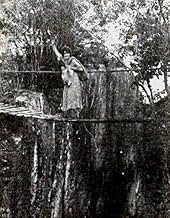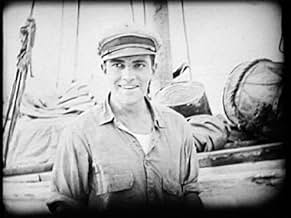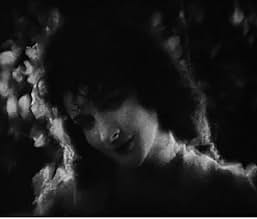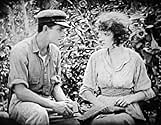A man murders his wife's lovers, escapes with his daughter to the South Pacific. A detective pursues him, joined by a young man who eventually falls in love with the daughter.A man murders his wife's lovers, escapes with his daughter to the South Pacific. A detective pursues him, joined by a young man who eventually falls in love with the daughter.A man murders his wife's lovers, escapes with his daughter to the South Pacific. A detective pursues him, joined by a young man who eventually falls in love with the daughter.
- Director
- Writers
- Stars
- Director
- Writers
- All cast & crew
- Production, box office & more at IMDbPro
Featured reviews
The Love Flower (1920) :
Brief Review -
Quite a mix from Griffith but the fact remains intact that such great stories could only be made in that era. Relatable even after 100 years. Forget all those heavy content classics of Griffith, forget those epics, forget those melodramas, those tragedies just for 95 minutes and enjoy this simple but interesting film with no load on your brain. DW Griffith was a completely different director for audience and critics after 'Birth Of The Nation' (1915) and 'Intolerance' (1916). And he even had 10 more classics in those 4 years before making this film so naturally the expectations were different. Contrary to his favourable genre and themes, The Love Flower came as a nice fun break. I am calling it a fun film because i enjoyed it a lot, not that it has any comedy or such stuff. Griffith again made his heroine to do the role of a hero, no directors of that time were doing it continuously as he did and very few directors have done it even till date. Griffith had won me there. In the film, A man murders his wife's lovers and escapes with his daughter to the South Pacific. A detective pursues him, joined by a young man who eventually falls in love with the daughter and then her attempts to save her father begin. It was quite a mix from Griffith, i mean multiple themes together in one narrative and all with dramatic proportions. Nevertheless, the story was itself great for its time and it is great even today. Highly relatable to today's daughters. If somebody had remade this film, I'm sure people would have liked it. I haven't seen much of Carol Dempster's work so for me it was like a fresh face in Griffith film. She was good fortunately. I loved George MacQuarrie in father's role the most. Overall, not a typical Griffith film but a fine typical film afterall.
RATING - 7/10*
By - #samthebestest.
Quite a mix from Griffith but the fact remains intact that such great stories could only be made in that era. Relatable even after 100 years. Forget all those heavy content classics of Griffith, forget those epics, forget those melodramas, those tragedies just for 95 minutes and enjoy this simple but interesting film with no load on your brain. DW Griffith was a completely different director for audience and critics after 'Birth Of The Nation' (1915) and 'Intolerance' (1916). And he even had 10 more classics in those 4 years before making this film so naturally the expectations were different. Contrary to his favourable genre and themes, The Love Flower came as a nice fun break. I am calling it a fun film because i enjoyed it a lot, not that it has any comedy or such stuff. Griffith again made his heroine to do the role of a hero, no directors of that time were doing it continuously as he did and very few directors have done it even till date. Griffith had won me there. In the film, A man murders his wife's lovers and escapes with his daughter to the South Pacific. A detective pursues him, joined by a young man who eventually falls in love with the daughter and then her attempts to save her father begin. It was quite a mix from Griffith, i mean multiple themes together in one narrative and all with dramatic proportions. Nevertheless, the story was itself great for its time and it is great even today. Highly relatable to today's daughters. If somebody had remade this film, I'm sure people would have liked it. I haven't seen much of Carol Dempster's work so for me it was like a fresh face in Griffith film. She was good fortunately. I loved George MacQuarrie in father's role the most. Overall, not a typical Griffith film but a fine typical film afterall.
RATING - 7/10*
By - #samthebestest.
Griffith was efficient when he filmed what turned out to be Clarine Seymour's final completed movie in April 1920's "The Idol Dancer," where the late actress served as the female lead. Using the backdrops of Ft. Lauderdale, Florida, and Nassau, Bahamas, the director was fulfilling his movie contract with First National by tackling two tropical-based films, "The Idol Dancer" and "The Love Flower."
The later movie starred Griffith's up-and-coming favorite actress, Carol Dempster. Very few people could see the reasoning behind the director's favorability on what critics felt was the young actress' limited talent. A 15-year-older in 'Intolerance' as a harem girl, Dempster slowly emerged as Griffith's primary actress in his early 1920's films. "The Love Flower" was her second co-starring role as a step-daughter of a father who murdered his wife's lover. They both escape on a boat to South Pacific Island, where they're chased down by a persistent detective.
Some praised Dempster for her action sequences, but others complained she was a poor imitation of the Gish sisters as well as veteran Mae Marsh. Such criticism failed to dissuade Griffith from rejecting her and overall "The Love Flower." In fact, he enjoyed the film so much after seeing the reaction of the audience during its premier, he bought the motion picture for $400,000, a considerable amount, from First National for his United Artists' distribution.
The later movie starred Griffith's up-and-coming favorite actress, Carol Dempster. Very few people could see the reasoning behind the director's favorability on what critics felt was the young actress' limited talent. A 15-year-older in 'Intolerance' as a harem girl, Dempster slowly emerged as Griffith's primary actress in his early 1920's films. "The Love Flower" was her second co-starring role as a step-daughter of a father who murdered his wife's lover. They both escape on a boat to South Pacific Island, where they're chased down by a persistent detective.
Some praised Dempster for her action sequences, but others complained she was a poor imitation of the Gish sisters as well as veteran Mae Marsh. Such criticism failed to dissuade Griffith from rejecting her and overall "The Love Flower." In fact, he enjoyed the film so much after seeing the reaction of the audience during its premier, he bought the motion picture for $400,000, a considerable amount, from First National for his United Artists' distribution.
This film has such a bad reputation that I pleasantly surprised when I watched it. No, it is not one of Griffith's great films, but I was entertained by it.
The film was shot as one of three that Griffith had contracted to make for First National. He rushed through them so none of the three represent Griffith at his best. However, that doesn't mean that they do not have their rewards.
I am not a fan of Carol Dempster. In fact I think she is generally an awful actress (although she did get better). Griffith was in love with her (she did not reciprocate) and saw her as an ideal of old fashioned Southern beauty. When he cast her that way she was wooden, ugly and boring to distraction. She was completely lacking in screen presence.
I never thought I would be writing these words but in this film I actually enjoyed watching her. In this case Griffith, for once, cast Carol in a role she could play (at least most of the time). She plays the rather athletic role, of a girl raised by her father is fairly primitive circumstances in the tropics. She climbs cliffs, dives off them into the sea. Swims underwater, and generally romps around looking wonderfully disheveled and doing nearly everything except swinging from a vine. She obviously enjoys it and she actually looks (am I really saying this) beautiful when she does it. She even has a presence on the screen. However, when she has a dramatic scene, she loses all her charm and confidence. Her presence dwindles to nothing and she becomes an ugly and boring actress. Fortunatly there are only a few of these moments.
Richard Barthelmess does his usual excellent job of acting. He has great presence regardless of if he is being athletic, cheerful or dramatic. He is clearly Carol's superior in acting. He even manages to make her look good in a few dicey scenes.
So, no, this is not a great film or even a significant film, but it can be fun and enjoyable. If you like Griffith and you have nothing better to do I might even recommend it.
The film was shot as one of three that Griffith had contracted to make for First National. He rushed through them so none of the three represent Griffith at his best. However, that doesn't mean that they do not have their rewards.
I am not a fan of Carol Dempster. In fact I think she is generally an awful actress (although she did get better). Griffith was in love with her (she did not reciprocate) and saw her as an ideal of old fashioned Southern beauty. When he cast her that way she was wooden, ugly and boring to distraction. She was completely lacking in screen presence.
I never thought I would be writing these words but in this film I actually enjoyed watching her. In this case Griffith, for once, cast Carol in a role she could play (at least most of the time). She plays the rather athletic role, of a girl raised by her father is fairly primitive circumstances in the tropics. She climbs cliffs, dives off them into the sea. Swims underwater, and generally romps around looking wonderfully disheveled and doing nearly everything except swinging from a vine. She obviously enjoys it and she actually looks (am I really saying this) beautiful when she does it. She even has a presence on the screen. However, when she has a dramatic scene, she loses all her charm and confidence. Her presence dwindles to nothing and she becomes an ugly and boring actress. Fortunatly there are only a few of these moments.
Richard Barthelmess does his usual excellent job of acting. He has great presence regardless of if he is being athletic, cheerful or dramatic. He is clearly Carol's superior in acting. He even manages to make her look good in a few dicey scenes.
So, no, this is not a great film or even a significant film, but it can be fun and enjoyable. If you like Griffith and you have nothing better to do I might even recommend it.
THE LOVE FLOWER is one of two DW Griffith films with South Seas settings, filmed at the same time in 1920. Both films showcase two up-and-coming young stars that were part of Griffith's company. THE LOVE FLOWER features Carol Dempster and Richard Barthelmess. The other film is THE IDOL DANCER, starring Clarine Seymour.
Since the story has been explained in other reviews I will just add my perspective on the movie.
SCRIPT: The story seems like a riff on Les Miserables, but isn't very well thought out. Mr Bevan (George MacQuarrie) is ultimately responsible for the death of his wife's lover because he initiated the struggle. Also, the attempts to convince us that Stella's (Carol Dempster) love is motivation enough to attempt to kill a policeman just don't hold water. We are asked to suspend not only our disbelief, but also our ethics. Griffith's flowery intertitles (a common weakness of his) are particularly irksome. SCORE: 3/10.
ACTING: I was particularly impressed with George MacQuarrie's turn as George Bevan. He never really seems to overdo it and turns in a measured performance, managing for the most part to stay away from some of the melodramatic mannerisms that can make silent movies hard to take nowadays. It felt quite modern to me. Anders Randolph, as the determined policeman Crane, also shows control and realism in his portrayal, without coming off as a villain. Richard Barthelmess does well for the most part, although there's not a whole lot of chemistry with the female lead.
She would be Carol Dempster. Though she has been reviled by many, Dempster actually could be superb on quite a few occasions. This would come more frequently later on in her career. She creates touching moments both as the young girl and as a more mature woman devoted to her father, and displays a warmth and charm in her close-ups. She also excels in the more athletic moments, like during her diving, swimming and climbing scenes. However, there are also moments of hand-wringing, arm-flailing melodrama in her performance that undermine her efforts. This is probably Griffith's fault as well, since he was determined to mold her into a facsimile of Lillian Gish or Mae Marsh...for all of his love for her, Griffith didn't seem to know how to consistently play to Dempster's strengths. Florence Short is adequate in her brief part, though she also succumbs to histrionics. ACTING SCORE: 6/10
CINEMATOGRAPHY/PRODUCTION: The cinematography is wonderful. Griffith's most famous and acclaimed cameraman, GW Bitzer, captures the beauty of the scenery (filmed in Florida and the Bahamas) wonderfully. For indoor scenes, he uses an array of long, medium, and close up shots, without resorting to stagey tableaux shots. He shows himself to be a master of his medium. The underwater scenes are also very well done. The editing appears fairly smooth. While not as revolutionary as previous Griffith films, the quality of the scenery and cinematography helps to keep viewer interest even now. SCORE: 8/10
SUMMARY: THE LOVE FLOWER isn't a total bust. It does have good moments. The cinematography is top notch and you can't beat the scenery. However, the performances have their ups and downs, and the story just doesn't work as well as Griffith would have us believe. MOVIE SCORE: 6/10
Since the story has been explained in other reviews I will just add my perspective on the movie.
SCRIPT: The story seems like a riff on Les Miserables, but isn't very well thought out. Mr Bevan (George MacQuarrie) is ultimately responsible for the death of his wife's lover because he initiated the struggle. Also, the attempts to convince us that Stella's (Carol Dempster) love is motivation enough to attempt to kill a policeman just don't hold water. We are asked to suspend not only our disbelief, but also our ethics. Griffith's flowery intertitles (a common weakness of his) are particularly irksome. SCORE: 3/10.
ACTING: I was particularly impressed with George MacQuarrie's turn as George Bevan. He never really seems to overdo it and turns in a measured performance, managing for the most part to stay away from some of the melodramatic mannerisms that can make silent movies hard to take nowadays. It felt quite modern to me. Anders Randolph, as the determined policeman Crane, also shows control and realism in his portrayal, without coming off as a villain. Richard Barthelmess does well for the most part, although there's not a whole lot of chemistry with the female lead.
She would be Carol Dempster. Though she has been reviled by many, Dempster actually could be superb on quite a few occasions. This would come more frequently later on in her career. She creates touching moments both as the young girl and as a more mature woman devoted to her father, and displays a warmth and charm in her close-ups. She also excels in the more athletic moments, like during her diving, swimming and climbing scenes. However, there are also moments of hand-wringing, arm-flailing melodrama in her performance that undermine her efforts. This is probably Griffith's fault as well, since he was determined to mold her into a facsimile of Lillian Gish or Mae Marsh...for all of his love for her, Griffith didn't seem to know how to consistently play to Dempster's strengths. Florence Short is adequate in her brief part, though she also succumbs to histrionics. ACTING SCORE: 6/10
CINEMATOGRAPHY/PRODUCTION: The cinematography is wonderful. Griffith's most famous and acclaimed cameraman, GW Bitzer, captures the beauty of the scenery (filmed in Florida and the Bahamas) wonderfully. For indoor scenes, he uses an array of long, medium, and close up shots, without resorting to stagey tableaux shots. He shows himself to be a master of his medium. The underwater scenes are also very well done. The editing appears fairly smooth. While not as revolutionary as previous Griffith films, the quality of the scenery and cinematography helps to keep viewer interest even now. SCORE: 8/10
SUMMARY: THE LOVE FLOWER isn't a total bust. It does have good moments. The cinematography is top notch and you can't beat the scenery. However, the performances have their ups and downs, and the story just doesn't work as well as Griffith would have us believe. MOVIE SCORE: 6/10
D.W. Griffith's two South Seas dramas made in Florida, which includes this film, "The Love Flower" and "The Idol Dancer", are two of his worst that I've seen. One can sense Griffith's lack of interest and inspiration. Probably the only thing worth noting about "The Love Flower" is that it features some underwater photography. Otherwise, the narrative--based on a magazine story and involving a relentless detective after our protagonist fugitives--is forgettable. Carol Dempster can't act. And, most of all, the care and energy behind Griffith's better work is missing here. It'd return in "Way Down East", as would Lillian Gish. "The Idol Dancer" and "The Love Flower" are merely slipshod productions Griffith rushed through to help relieve his increasing financial difficulties.
Did you know
- TriviaThe Love Flower is free for download on the Internet Archive.
- ConnectionsFeatured in Time of the Robots (2012)
Details
Box office
- Budget
- $300,000 (estimated)
- Runtime1 hour 35 minutes
- Sound mix
- Aspect ratio
- 1.33 : 1
Contribute to this page
Suggest an edit or add missing content



























